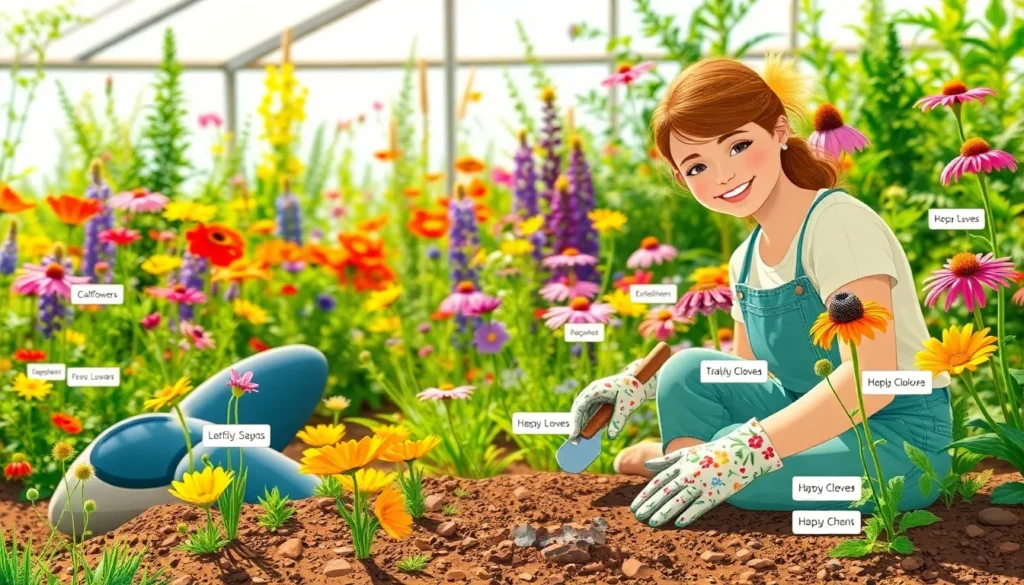Imagine stepping into your backyard to find a vibrant tapestry of colors swaying gently in the breeze, each flower inviting a host of pollinators and adding a touch of wild charm to your garden. Wildflowers, with their unrestrained beauty and ecological benefits, have the power to transform an ordinary outdoor space into a lively haven for both nature and the soul. Whether you’re a novice gardener with a budding interest or a seasoned green thumb seeking to diversify your garden’s palette, wildflowers offer an enchanting and low-maintenance option that brings life and color to any landscape.
For beginners, the prospect of growing wildflowers can seem both exciting and a tad overwhelming, but fear not—these resilient plants are more forgiving than you might expect. Experienced gardeners will find that incorporating wildflowers is not only a delightful challenge but also a rewarding way to support local ecosystems by providing essential habitats for bees, butterflies, and birds. In this guide, you’ll discover how to select the right species for your climate, prepare your soil to mimic natural conditions, and master the art of sowing and nurturing these blossoms with ease.
As you embark on this blossoming journey, prepare to learn practical tips that will simplify your wildflower gardening experience, from choosing the ideal planting season to understanding the importance of native species. We’ll explore how to create a balanced ecosystem in your backyard, ensuring your wildflower garden thrives while requiring minimal intervention from you. With each step, you’ll gain the confidence to cultivate a garden that is as sustainable as it is stunning, inviting nature’s beauty into your own backyard with open arms.
Select Suitable Wildflower Seeds
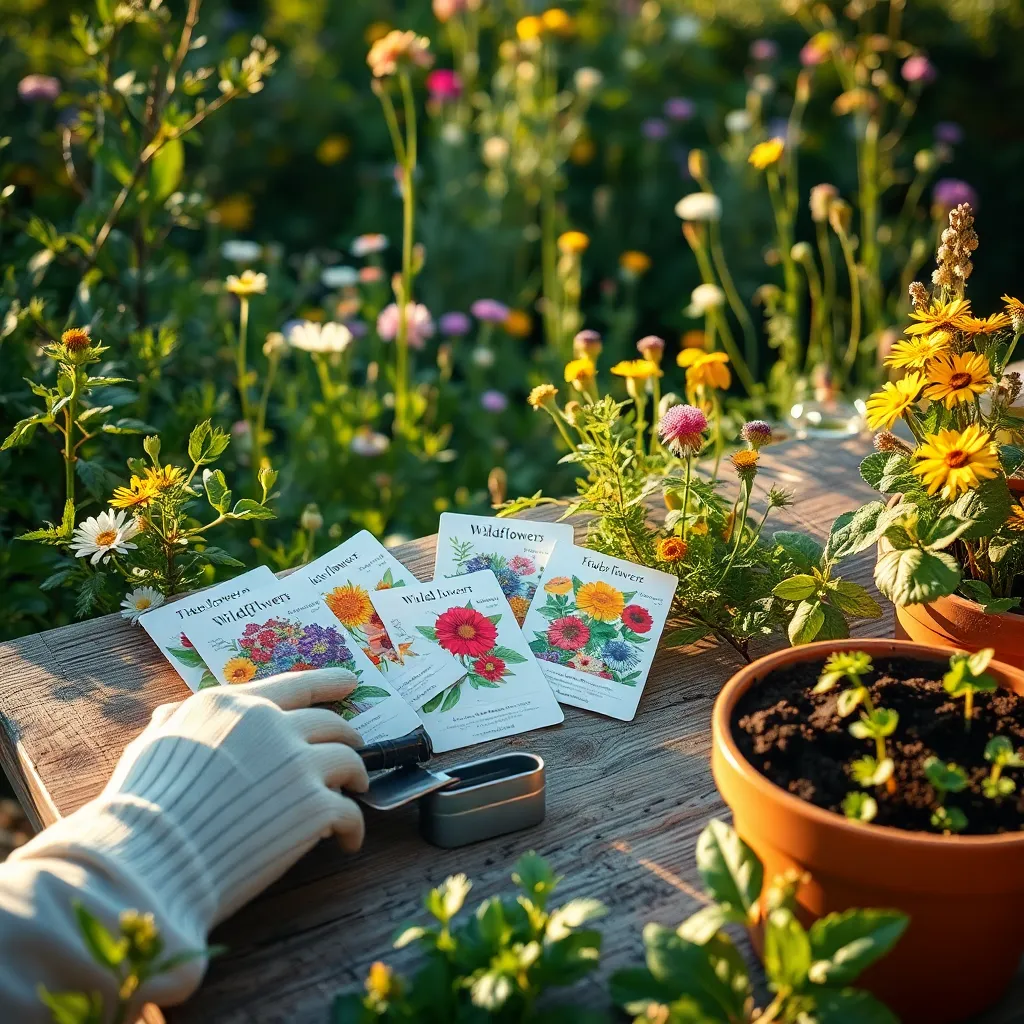
When selecting wildflower seeds, start by considering the local climate and soil conditions in your backyard. Choose seeds that are native to your region to ensure they thrive with minimal intervention, as they are adapted to the local ecosystem.
It’s important to assess the sunlight availability in the area where you plan to plant your wildflowers. Most wildflowers prefer full sun, so look for an area that receives at least six hours of direct sunlight each day.
For beginners, a mixed seed packet containing a variety of wildflowers can be an excellent choice. These mixes often include hardy species like black-eyed Susans, cosmos, and cornflowers, which are easy to grow and provide a long bloom period.
Experienced gardeners might want to experiment with creating their own seed blend, focusing on species that attract pollinators or create a specific color palette. Pay attention to bloom times and growth habits to ensure a continuous display of blooms throughout the growing season.
Prepare the Planting Area
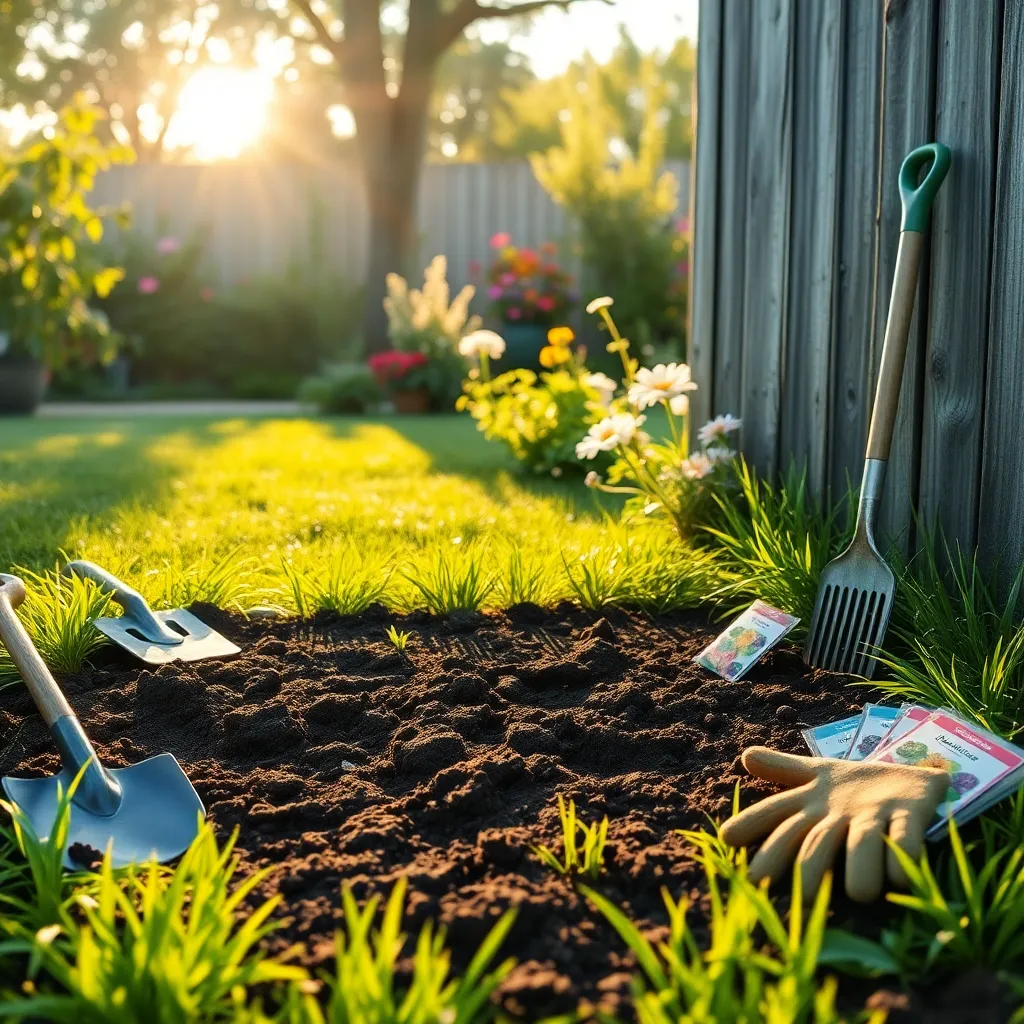
Before sowing your wildflower seeds, it’s crucial to prepare the planting area properly. Start by selecting a location that receives at least six hours of sunlight each day, as most wildflowers thrive in full sun.
Begin by clearing the area of existing vegetation, including weeds and grass, to reduce competition for resources. Use a shovel or garden fork to loosen the soil to a depth of about eight inches, enhancing drainage and root penetration.
Amend the soil with organic matter, such as compost or well-rotted manure, to improve fertility and structure. Aim for a soil composition that is well-draining yet retains some moisture, as wildflowers generally prefer these conditions.
For those with compacted or clay-heavy soil, consider adding sand or perlite to improve aeration and drainage. If you’re working in a region with particularly sandy soil, incorporating some peat or loam can help retain essential moisture.
Once the soil is prepared, rake the surface to create a fine, even tilth, ideal for seed sowing. This step ensures that your seeds make good contact with the soil, increasing germination success.
Sow Seeds Evenly Across Soil
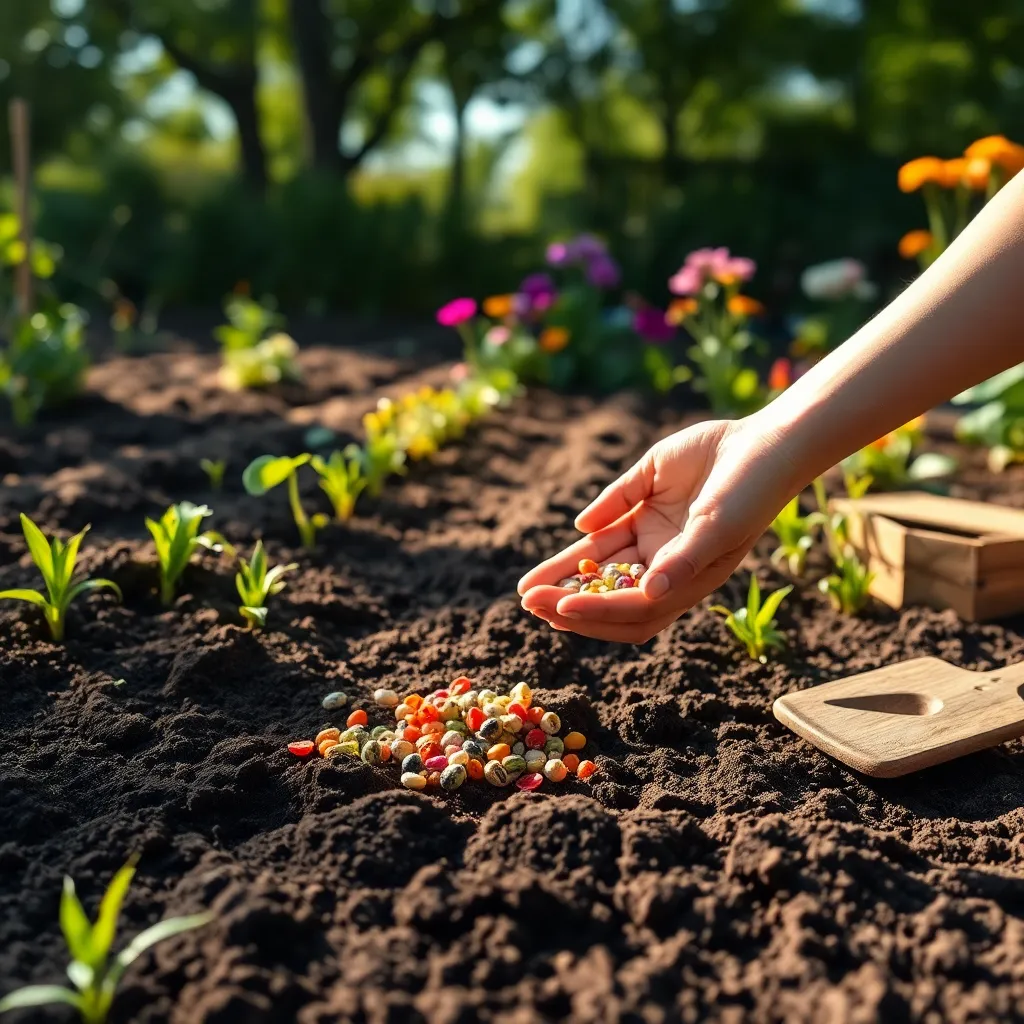
Once the planting area is ready, it’s time to focus on distributing your wildflower seeds evenly across the soil. This step is crucial to ensure that each plant has enough space and resources to thrive.
Begin by mixing your wildflower seeds with sand or vermiculite in a large container. This mixture helps in spreading the seeds more uniformly over the soil without clumping together.
Scatter the seed mixture by hand across the prepared soil surface. Aim for a consistent coverage, and consider walking backward as you sow to avoid stepping on freshly scattered seeds.
Patience and precision are key during this process. If you’re working with a larger area, using a seed spreader can help maintain even distribution.
For those aiming for perfection, lightly rake the surface after sowing to ensure good seed-to-soil contact. However, be careful not to bury the seeds too deeply, as wildflowers typically need light to germinate.
Water the area gently after sowing to settle the seeds into the soil. Use a fine spray to avoid washing them away, and keep the soil consistently moist until germination.
Water Gently to Establish Growth
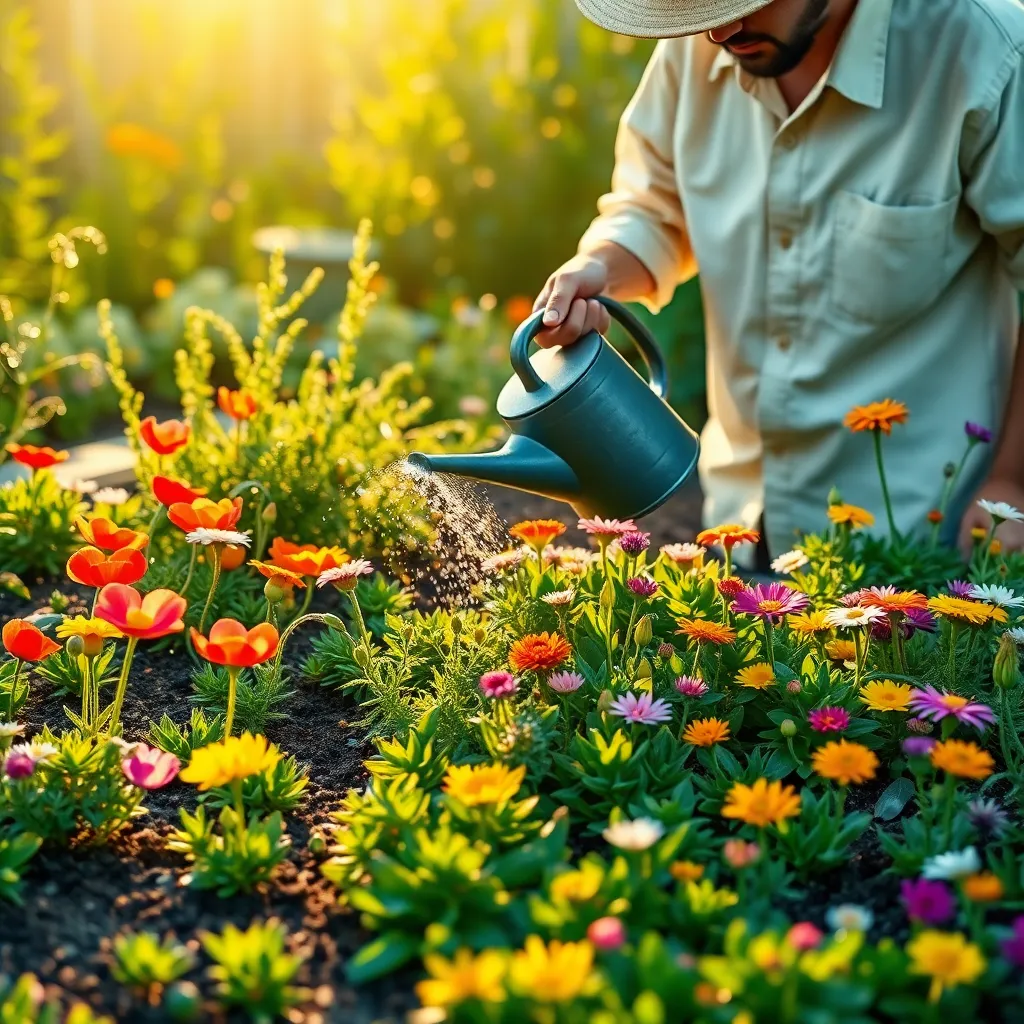
Once your wildflower seeds are evenly distributed, it’s crucial to water them gently to avoid washing them away. Use a watering can with a fine rose attachment or a gentle spray nozzle on your hose to apply water evenly without disturbing the seeds.
It’s important to keep the soil consistently moist during the germination period, which usually lasts two to four weeks. Aim to water lightly every day or every other day, depending on your local weather conditions, ensuring the top inch of soil remains damp.
For more experienced gardeners, consider installing a drip irrigation system to maintain consistent moisture levels without over-saturating the soil. This method can be particularly beneficial in larger areas or if you’re unable to hand water regularly.
When watering, do it early in the morning or late in the afternoon to minimize evaporation and water loss. Avoid watering in the heat of the day, as this can lead to rapid evaporation and might scorch young seedlings.
Monitor your wildflower patch closely and adjust your watering schedule based on rainfall and temperature changes. Proper moisture management during these early stages will help establish strong roots and ensure lush, vibrant blooms throughout the growing season.
Maintain and Monitor Wildflower Patch
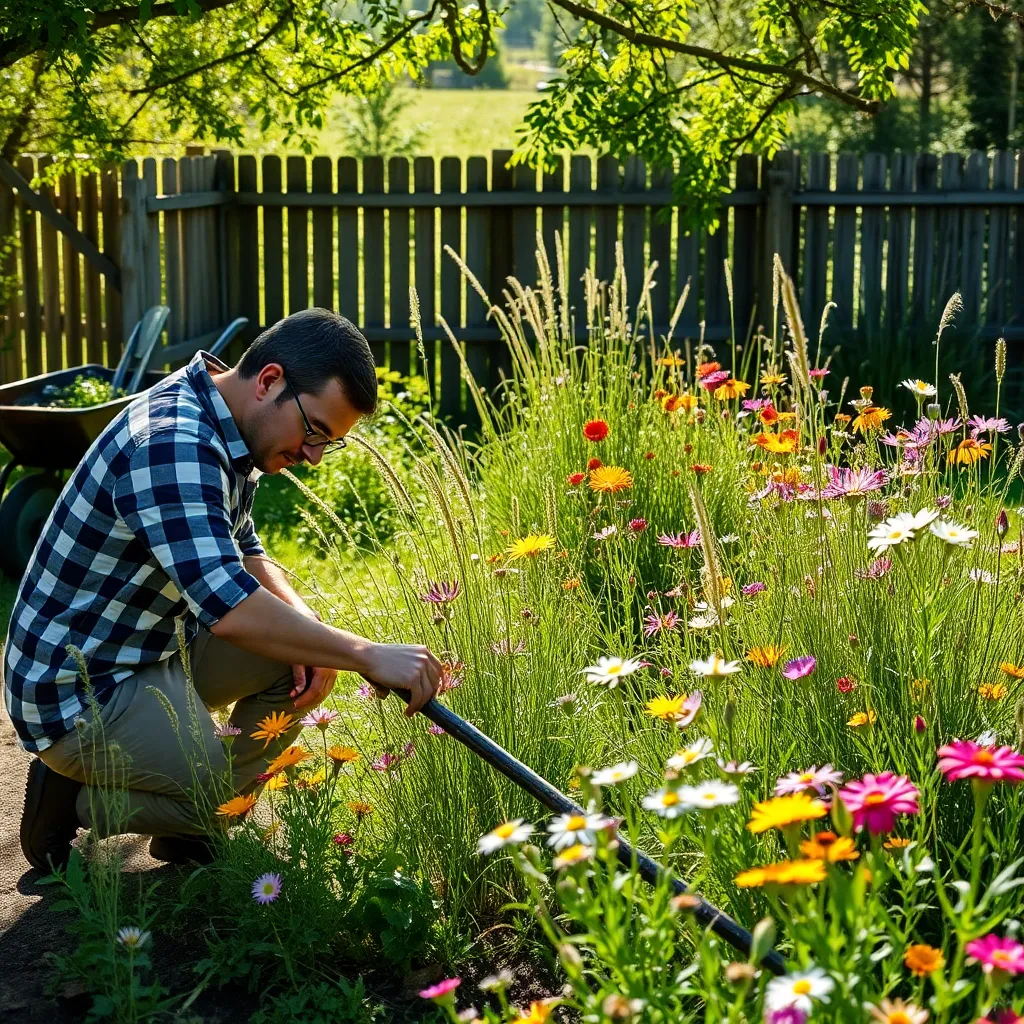
To ensure your wildflower patch thrives, regular maintenance is key. Begin by removing any weeds that compete with your wildflowers for nutrients and sunlight.
Mulching around your plants can help retain soil moisture and suppress weed growth. Use organic materials like straw or shredded leaves, applying a layer about two inches thick around your flowers.
Check your wildflower patch every few weeks for signs of pests or disease. Look for discolored leaves or unusual spots, and consider using natural remedies or introducing beneficial insects to manage any issues.
Seasonal trimming encourages healthier growth and prolongs blooming periods. After the initial bloom, deadhead spent flowers by cutting them just above a set of healthy leaves to promote further flowering.
For advanced gardeners, consider performing a soil test in your wildflower area every couple of seasons. This helps to optimize soil conditions by adjusting pH levels or adding necessary nutrients, ensuring your flowers continue to flourish.
Conclusion: Growing Success with These Plants
In nurturing a vibrant relationship, much like cultivating a wildflower garden, several key principles guide success: understanding your partner’s needs, embracing growth and change, maintaining open communication, fostering emotional support, and appreciating the beauty in your shared journey. These concepts are akin to tending a garden, requiring attention, patience, and care.
As a tangible first step, take a moment today to express genuine appreciation to your partner for something they’ve done recently. This small act can sow seeds of positivity, strengthening your connection.
Remember, relationships flourish when nurtured with intention. Bookmark this article to revisit these strategies and ensure your relationship blooms beautifully. By doing so, you’ll have a handy reference to help you navigate the complexities of love and partnership.
Looking ahead, with dedication and mindful effort, your relationship can grow as abundantly as a field of wildflowers, thriving in the richness of mutual understanding and support. Embrace this journey with enthusiasm and trust that your garden of love will flourish, bringing joy and fulfillment to both your lives.

